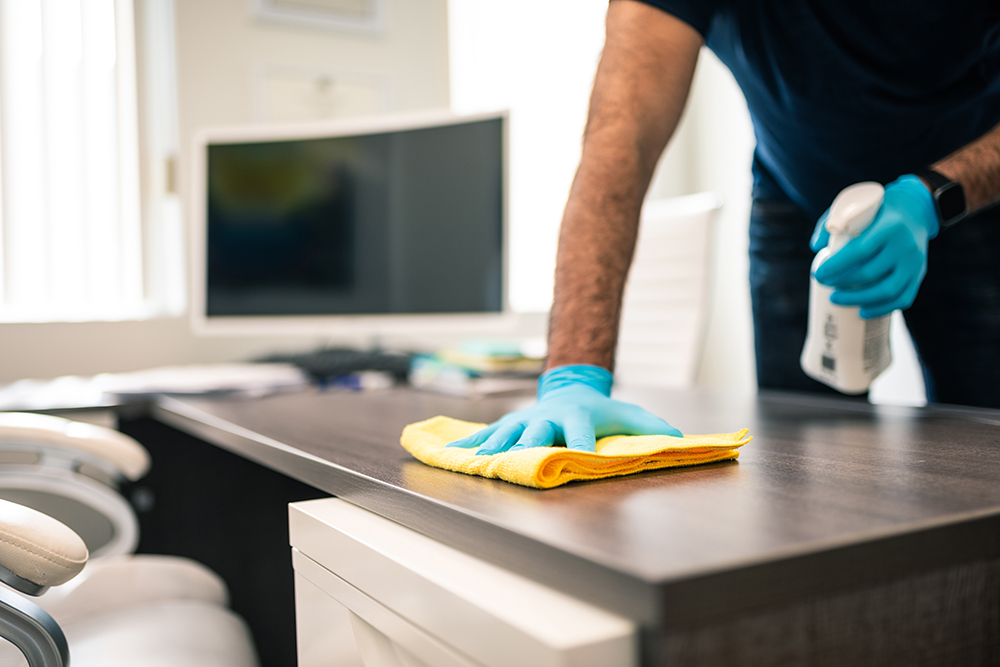As employees return to the workplace in greater numbers this year and concerns about virus transmission and infection remain, businesses and facility managers will continue to focus on hygiene and social distancing practices and to improve protocols and standards for commercial cleaning and disinfecting in public and shared indoor work environments.
To provide peace of mind and in response to the demand for higher standards of cleaning and disinfection, commercial cleaning companies are using technologies including electrostatic sprayers to disinfect surfaces effectively and efficiently, particularly in businesses with large scale operations and difficult to reach areas.
There is also a renewed focus on the use of antimicrobial products in shared work environments. Whereas anti-bacterial products are designed to kill or inhibit the growth of bacteria, anti-microbial products kill or inhibit the growth of micro-organisms including bacteria, fungi and viruses, and can provide longer lasting protection if applied properly.
The ServiceMaster Clean PROTECT-3 ADVANCE™ program provides comprehensive cleaning and disinfecting services including the use of anti-microbial products, to provide continuous, preventative protection for public and commercial facilities of any scale. A core feature of the program is ATP testing, a technology used in healthcare environments for decades that measures the amount of organic matter on a surface before and after cleaning and disinfection.
Indoor air quality (IAQ) is another major concern in maintaining workplace safety today, especially during winter months when windows are closed. Because respiratory and flu viruses are transmitted primarily via airborne particles, effective maintenance of clean indoor air in shared workspaces is essential to help prevent infection transmission.
Managers and employers must reassess their resources for ensuring proper indoor air ventilation. Not only do the usual pollutants such as dust, pollen, bacteria, Volatile Organic Compounds (VOCs), pet dander, dust mites and mould need to be addressed and controlled, but the elimination of virus pathogens is now also a priority.
Poor IAQ can contribute to absenteeism and a loss of productivity for businesses, and in this era of increased risk from respiratory virus transmission, the stakes are even higher. Pathogens such as COVID-19 or the common cold virus exist in aerosols emitted by infected people when they breathe, talk, cough, or sneeze, and can remain suspended in the air for extended time in poorly ventilated indoor spaces.
As business owners and facility managers work to reopen and transition employees back to the workplace and work to establish effective protocols for cleaning, disinfecting and air quality control, they need to keep aware of the CCOHS (Canadian Centre for Occupational Health and Safety) health and safety guidelines and recommendations.1
Due diligence places a duty on employers to take all reasonable precautions to prevent disease transmission in indoor work environments including risk assessment of air ventilation and cleaning and disinfecting high-touch surfaces where pathogens are most likely to reside (door handles, elevator buttons, shared telephones, etc.) Employers must also encourage staff to stay home when they are sick or allow them to work at home whenever possible.2
To reduce risk of disease transmission and achieve the proper standards of protection for health and safety for your employees and customers, use available Public Health Service resources3 and look for a professional commercial cleaning and disinfection company with the knowledge and experience to provide the most up-to-date cleaning and disinfection products and technology.
Sources
1 https://www.ccohs.ca/outbreaks/
